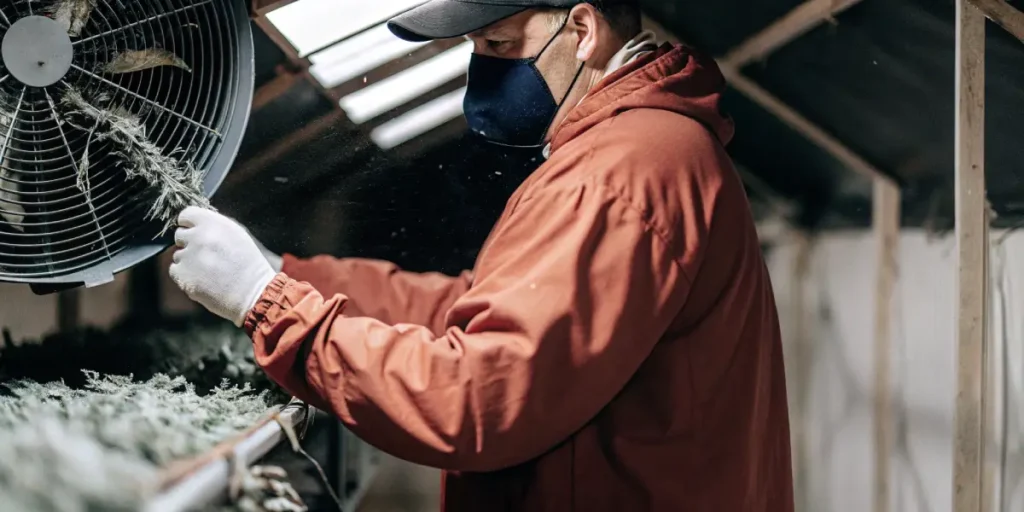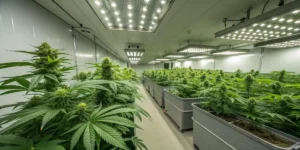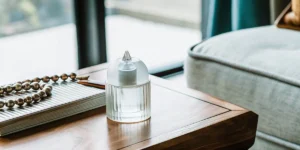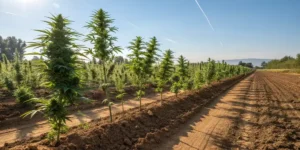Kama Kush CBD is an exceptional strain for those seeking the therapeutic benefits of cannabis without the intense psychoactive effects of THC. This strain is renowned for its high CBD content, which makes it ideal for medical users who wish to alleviate symptoms such as pain, anxiety, and inflammation while maintaining mental clarity. Successfully cultivating Kama Kush CBD requires attention to detail and a nurturing environment. In this guide, we will walk you through the step-by-step process of growing this remarkable strain.
The first step in growing Kama Kush CBD is to select high-quality seeds from a reputable source. This ensures the genetic integrity of the strain and increases the likelihood of a successful harvest. Once you have your seeds, germinate them using the paper towel method or by planting them directly into a small pot filled with a seed-starting mix. Keep the seeds in a warm, dark, and humid environment to promote germination. Once the seedlings emerge, transfer them to a grow medium like coco coir, soil, or hydroponics.
Kama Kush CBD thrives best in a controlled indoor environment where temperature, humidity, and light can be regulated. Maintain a temperature range of 20-25°C (68-77°F) during the day and slightly cooler at night. Humidity levels should be kept at around 40-50% during the vegetative stage and lowered to 30-40% during flowering to prevent mold and mildew. Provide your plants with 18 hours of light and 6 hours of darkness during the vegetative phase, transitioning to 12 hours of light and 12 hours of darkness during the flowering phase.
Proper nutrition is crucial to the health and productivity of your plants. During the vegetative stage, feed your Kama Kush CBD plants with a balanced nutrient solution high in nitrogen to promote vigorous growth. As the plants enter the flowering stage, switch to a formula rich in phosphorus and potassium to support bud development. Regularly monitor the pH levels of your water and nutrient solution, keeping them between 6.0-6.5 for soil and 5.5-6.0 for hydroponics.
As your Kama Kush CBD plants develop, pruning and training techniques such as topping, low-stress training (LST), and the Screen of Green (ScrOG) method can be employed to maximize light exposure and improve yields. These methods help manage plant height and create an even canopy while encouraging the growth of multiple colas.
Harvesting occurs around 8-9 weeks into the flowering stage when the trichomes on the buds turn milky white with some amber hues. Carefully cut the branches and remove the large fan leaves before hanging them upside down in a dark, well-ventilated area to dry. After 7-10 days, when the stems snap rather than bend, trim the buds and place them in glass jars for curing. Open the jars daily for a week to allow moisture to escape, then seal them tightly. Proper curing enhances flavor, potency, and smoothness.
Growing Kama Kush CBD can be a rewarding endeavor, yielding high CBD, low THC cannabis that caters to the medicinal user. By following these steps and maintaining diligence in caring for your plants, you can enjoy a successful harvest of this therapeutic strain.
kama kush cbd Strain Overview: Traits, Effects & Genetics
Kama Kush CBD is an intriguing addition to the world of cannabis, particularly celebrated for its high CBD content and relatively low THC levels, making it a prime choice for those seeking therapeutic benefits without an overwhelming psychoactive experience. This strain is a hybrid, combining the genetic prowess of Indica and Sativa strains but is predominantly Indica-dominant. Ideal for both recreational users looking for relaxation and medical users seeking symptom relief, Kama Kush CBD provides a balanced experience that lends itself well to a variety of uses.
The strain is renowned for its robust growth characteristics, making it a favorite amongst cultivators, both experienced and novice. Kama Kush CBD plants tend to exhibit a bushy structure with dense and resinous buds, characterized by their bright green color and subtle undertones of purple. These plants are well-suited to both indoor and outdoor growing conditions. Indoors, they flourish with a flowering time of approximately 8 to 9 weeks, while outdoor growers can expect to harvest their yield in late September to early October. The strain’s adaptability and resilience to common pests and molds make it a hassle-free option for many growers.
The effects of Kama Kush CBD are particularly sought after due to their calming and therapeutic qualities. With a CBD content often surpassing 12% and THC levels that usually remain under 1%, users report experiencing a gentle relaxation and soothing tranquility without the heavy sedation associated with some high-THC strains. This strain is commonly used to alleviate anxiety, manage chronic pain, and reduce inflammation, offering a clear-headed experience that allows daily activities to continue without interruption. Its mild, earthy aroma with hints of citrus and spicy undertones adds to its appeal, creating a multi-sensory experience that many find enjoyable.
Genetically, Kama Kush CBD is a product of meticulous breeding aimed at maximizing CBD content while maintaining an appealing flavor and aroma profile. Its lineage includes significant genetic input from Kama strains, which are known for their potent CBD characteristics, and robust Indica strains that lend substantial growth vigor and yield potential. This careful genetic selection not only enhances its medicinal properties but also ensures that it delivers consistent and reliable performance in terms of both growth and effects, establishing Kama Kush CBD as a noteworthy strain in the plethora of CBD-centric cannabis options available today.
Optimal Environment to Grow kama kush cbd Successfully
Creating an optimal environment for growing kama kush CBD requires keen attention to various factors impacting plant health and yield. This cannabis strain is particularly known for its calm-inducing properties and high CBD content, making it ideal for those seeking medicinal benefits without psychoactive effects. To ensure a successful grow, consider controlled indoor environments where variables such as temperature, humidity, and light can be meticulously managed.
Firstly, temperature plays a critical role in cannabis plant development. For kama kush CBD, maintaining a temperature range between 70°F to 80°F (21°C to 27°C) during the day is optimal. At night, a slightly cooler range of 65°F to 75°F (18°C to 24°C) promotes strong plant growth while preventing mold and pests. Consistency in temperature helps avoid plant stress, ensuring robust development.
Humidity control is equally important. During the vegetative stage, maintain relative humidity levels between 40% to 60%. As the plant transitions to the flowering phase, reducing humidity to 30% to 40% helps prevent mold and bud rot, which are common issues in high-moisture environments. To manage these levels precisely, investing in a reliable hygrometer and a dehumidifier can be particularly beneficial.
Lighting is another crucial aspect of growing kama kush CBD. Providing 18-24 hours of light during the vegetative stage promotes strong growth. Switching to a 12/12 light cycle initiates the flowering phase, essential for maximizing yield. Full-spectrum LED grow lights are recommended for their energy efficiency and ability to closely mimic natural sunlight, ensuring your plants receive the necessary spectral distribution for healthy development.
Besides these conditions, maintaining proper soil pH levels between 6.0 and 7.0 is fundamental to avoid nutrient lockout, which can drastically reduce yield quality. Use a well-aerated, nutrient-rich soil mix to support active root development, enhancing nutrient uptake. Regularly check and adjust nutrient solutions to cater to the plants’ specific needs at different growth stages.
Altogether, creating the optimal growing environment for kama kush CBD involves carefully managing temperature, humidity, light, and soil conditions. By doing so, growers can ensure a thriving crop that delivers the distinctive qualities and benefits of this unique cannabis strain.
Grow Room Setup for kama kush cbd Plants
When setting up a grow room for your Kama Kush CBD plants, the first consideration should be the space you have available. Aim for an area that allows for adequate ventilation and can accommodate both the growth stage and the flowering stage of the plants. Ideally, you should allocate a separate space for each stage, but if that’s not possible, ensure the room can comfortably house the plants at their full maturity. Kama Kush CBD, known for its therapeutic properties and relatively low psychoactive effects, can grow to a modest size, making it suitable for both small setups and larger grow rooms.
Next, consider the lighting, which is crucial for the proper growth of Kama Kush CBD plants. During the vegetative stage, they will require around 18-24 hours of light per day. LED grow lights are a popular choice due to their energy efficiency and low heat output, which is beneficial for maintaining ideal temperature conditions in the grow room. The flowering stage will need an adjustment to the light cycle, shifting to 12 hours of light per day. Adequate lighting not only influences the growth rate but also the potency and quality of the CBD production, so investing in quality lights is crucial.
Ventilation is another critical factor in the grow room setup. Proper airflow prevents mold and mildew, conditions which could be detrimental to the plants. Install fans to circulate air and consider an exhaust system to manage humidity levels, ideally between 40-50% during flowering. This helps prevent bud rot, a common issue for dense buds such as those of the Kama Kush CBD. Additionally, maintain a stable temperature within the range of 70-85°F (21-29°C) to promote healthy growth and maximize CBD yield.
Finally, focus on the soil and nutrient regimen. Kama Kush CBD thrives in well-aerated, rich, organic soil with appropriate drainage. Introducing nutrients high in nitrogen during the vegetative stage is vital, transitioning to higher phosphorus and potassium levels during flowering to support root development and bud growth. Regularly monitor pH levels, aiming for a range between 6.0 and 7.0, to ensure optimal nutrient uptake and prevent nutrient lockout, which can stunt growth or cause deficiencies.
Indoor Growing Tips for kama kush cbd
Growing kama kush cbd indoors can be a rewarding project, offering growers the opportunity to control every aspect of the environment to maximize yields. Kama kush cbd is known for its calming effects, making it a popular choice for therapeutic use. To successfully cultivate this strain indoors, it’s essential to create an optimal environment. Begin by setting up a grow room with reflective walls to maximize light exposure. Ensure that the space is well-ventilated, as good airflow is critical in preventing mold and pests.
Lighting is one of the most important factors when growing kama kush cbd indoors. A full-spectrum LED grow light is recommended as it mimics the natural sunlight required for photosynthesis and efficient plant growth. Position your lights at the appropriate distance from the plants to prevent heat stress while ensuring ample light absorption. During the vegetative stage, aim for an 18/6 light cycle (18 hours of light followed by 6 hours of darkness).
Maintaining optimal temperature and humidity levels is crucial. Kama kush cbd thrives in temperatures between 70-80°F (21-27°C) during the day and slightly cooler temperatures at night. Humidity should be kept at 40-60% during the vegetative stage and reduced to 40-50% during the flowering phase. It is essential to monitor these levels consistently with a hygrometer to ensure the environment stays within the ideal range.
Cultivating kama kush cbd also requires proper nutrition and care. Use a high-quality cannabis-specific nutrient mix to provide the essential macro and micronutrients. During the vegetative stage, nitrogen-rich fertilizers are needed, while phosphorus and potassium levels should be increased during the flowering stage to promote robust bud development. Always adjust the pH of the water to between 6.0 and 6.5, as this range allows for optimal nutrient absorption.
Pruning and training techniques can enhance yields and growth quality by ensuring light penetrates deeper into the canopy. Techniques such as topping and low-stress training (LST) help control plant height and encourage lateral growth. Regularly inspect plants for pests or disease symptoms, and address any issues immediately to maintain plant health. Harvest time will typically occur around 8-9 weeks of flowering when the trichomes are milky white with a hint of amber.
Outdoor Growing Tips for Kama Kush CBD
Kama Kush CBD is a delightful strain, renowned for its rich balance of high CBD content and calming effects, making it ideal for therapeutic uses. When growing Kama Kush CBD outdoors, selecting the appropriate location is crucial. The plant thrives in a Mediterranean climate, favoring sunny spots that promise consistent sunlight exposure. It’s best to avoid shaded areas as inadequate light can result in lanky plants with reduced bud production. An open site with good air circulation will also help prevent mold and pest issues.
The soil is another vital factor for successful cultivation. Kama Kush CBD requires well-draining soil enriched with organic matter to support robust growth. Consider preparing the soil beforehand by adding compost or a balanced organic fertilizer to ensure the plants receive the necessary nutrients throughout their growth cycle. Monitoring soil pH is equally important, with an optimum range between 6.0 and 7.0 to facilitate nutrient absorption. Regular checks and adjustments can help maintain ideal soil conditions.
Watering practices can significantly influence the health of Kama Kush CBD plants. Established plants should be watered deeply but less frequently to encourage the roots to grow deeper into the soil, making them stronger and more drought-resistant. It’s crucial to water during the early morning or late afternoon to minimize the risk of evaporation and stress on the plants. Additionally, mulching around the base can help retain soil moisture, protect against temperature fluctuations, and reduce weed growth.
Lastly, regular monitoring and maintenance are essential for successfully growing Kama Kush CBD outdoors. This includes inspecting for pests such as aphids and spider mites, as well as implementing natural pest control measures if necessary. Training techniques like topping or low-stress training can help optimize light exposure and increase yields as well. By paying close attention to these aspects, growers can maximize the potential of their Kama Kush CBD plants, resulting in a bountiful and high-quality harvest.
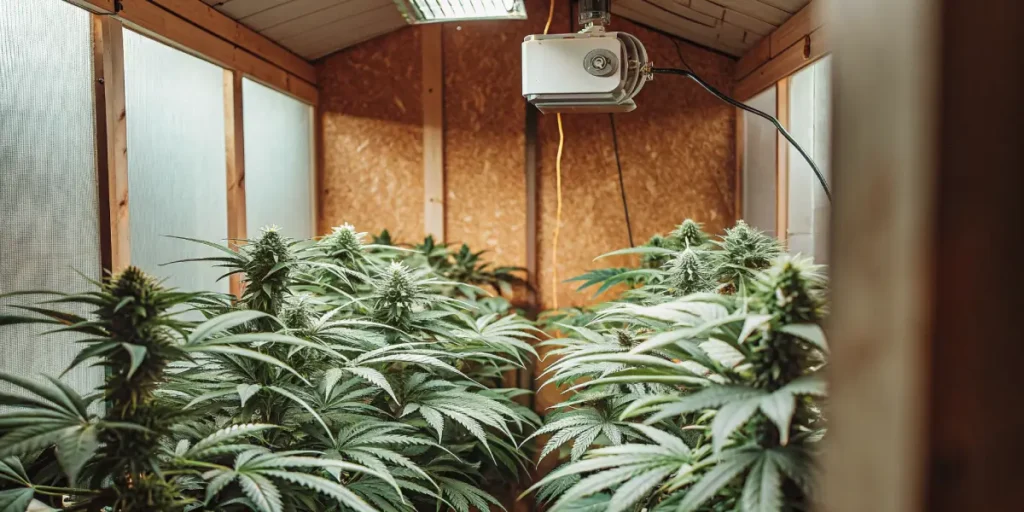
How to Germinate & Propagate Kama Kush CBD
Germinating and propagating Kama Kush CBD is a rewarding process for cultivators seeking to grow their own high-CBD cannabis plants. The initial stage of successful germination begins with selecting high-quality seeds. It is essential to obtain seeds from reputable sources to ensure that they have optimal genetic qualities and a high likelihood of sprouting. Before you begin, gather materials such as distilled water, paper towels, and zip-lock bags or a suitable seedling tray. The classic paper towel method is widely used due to its simplicity and effectiveness.
To germinate, moisten a few sheets of paper towel with distilled water, ensuring they are damp but not overly saturated. Place the Kama Kush CBD seeds evenly spaced between the damp sheets. Once arranged, slide the paper towels with seeds into a zip-lock bag or place them between two plates to maintain moisture levels. Store the setup in a warm, dark environment, ideally between 70-85°F (21-29°C). Check the moisture levels daily, and within 24-72 hours, you can expect the seeds to begin cracking open and revealing tiny taproots.
After germination, the propagation phase involves transferring the sprouted seeds into a suitable growing medium. Carefully transplant each seedling with taproot facing downward into individual pots filled with a light, nutrient-rich soil mix. Keep the soil consistently moist, but be cautious not to overwater, as this can stunt growth or invite mold. The young plants should receive gentle light exposure, making LED grow lights or natural indirect sunlight ideal for promoting healthy growth.
Monitor the humidity and temperature levels carefully during the seedling stage, ensuring they remain within optimal ranges to avoid stress on the young Kama Kush CBD plants. As the plants grow, consider gradually increasing their exposure to direct sunlight or more intense grow lights, and introduce them to a more robust feeding schedule with appropriate nutrients. By maintaining a controlled environment and monitoring the plants’ progress closely, your Kama Kush CBD will thrive, leading to a successful cultivation experience.
Vegetative Stage: Nurturing Your Kama Kush CBD Plants
When growing Kama Kush CBD, the vegetative stage is a crucial period for establishing a healthy plant foundation. This phase typically begins a few weeks after germination and can extend up to eight weeks or more, depending on desired plant size and growing conditions. During this time, the focus should be on developing a strong root system and robust foliage to support the plant’s later stages. Providing ample light is essential during the vegetative stage, as it promotes photosynthesis and encourages growth.
To optimize the health of your Kama Kush CBD plants during the vegetative stage, ensure they are exposed to suitable light conditions. Use full-spectrum LED grow lights or high-pressure sodium (HPS) lamps for 18-20 hours per day to mimic the long summer days and stimulate vigorous growth. Also, ensure the lights are adequately spaced from the plants to prevent heat stress while providing sufficient illumination for lower leaves. Proper lighting is critical for dense foliage and vigorous development, setting the stage for a bountiful yield.
Watering and nutrient management are equally vital during the vegetative stage. Kama Kush CBD plants thrive in well-aerated soil that drains efficiently, preventing root rot. Water the plants thoroughly, but allow the soil to dry out slightly between waterings to encourage strong root growth. Incorporating a balanced nutrient regime, particularly rich in nitrogen, will support leaf and stem development. Monitoring pH levels around 6.0-6.5 ensures nutrient availability, while regular checking helps prevent deficiencies or lockouts.
Training and pruning are essential techniques during this stage to control plant size and shape, promoting a more even canopy. Methods such as topping or low-stress training (LST) can increase light penetration and encourage lateral growth, ultimately enhancing yield. Prune away any dead or yellowing leaves and focus on developing a symmetrical structure that maximizes light absorption. A consistent care regimen and attention to environmental factors are key in nurturing a healthy Kama Kush CBD plant.
Finally, maintaining an optimal environment is crucial to prevent stress-related issues in your Kama Kush CBD plants. Keep the temperature between 70-85°F (21-29°C) and humidity levels around 40-60%. Proper ventilation is vital for air circulation and pest prevention. Employ oscillating fans to strengthen stems and reduce mold risk. With attention to detail and adequate care, you will lay the groundwork for a successful transition to the flowering stage, ensuring a rewarding cultivation experience.
Flowering kama kush cbd: What to Expect
When cultivating Kama Kush CBD, the flowering stage is an exciting phase that requires careful attention to detail. This unique cannabis strain is particularly celebrated for its high CBD content and low THC levels, making it a favorite among those seeking therapeutic effects without intense psychoactive experiences. During the flowering phase, which typically spans around 8 to 9 weeks, growers will witness the full expression of this strain’s blooming potential. Its compact structure and dense foliage set the scene for tightly packed buds that develop a distinctive aroma and appearance over time.
As the flowering progresses, expect to see the buds gradually thickening and the trichomes starting to appear. The trichomes are tiny, crystal-like structures that are crucial for determining the potency and maturity of the plant. For Kama Kush CBD, these trichomes serve as a visible indicator of the strain’s rich cannabinoid profile. As the weeks pass, you’ll notice the pistils transforming from a light white to an amber hue, signaling the plant’s readiness for harvest. The distinct scent profile of Kama Kush CBD, characterized by earthy, woody, and slightly spicy notes, becomes more pronounced during this stage.
It’s crucial to maintain optimal growing conditions during the flowering phase to ensure the health and potency of the plant. This includes monitoring humidity levels, which should remain relatively low to prevent mold development on the dense buds. Adequate ventilation is also necessary to facilitate air circulation and promote a healthy environment for the plants. Additionally, consistent watering and nutrient supply are integral to achieving a robust yield. Making adjustments based on the plant’s needs will ensure that Kama Kush CBD reaches its full therapeutic potential by the end of the flowering stage.
Finally, as you approach the final weeks of flowering, considering the timing of the harvest is essential. Harvesting too early might reduce the CBD potency, whereas harvesting too late could degrade the cannabinoids and terpenes. Utilizing a magnifying glass or microscope to examine the trichomes is an effective way to decide the perfect harvest time. For Kama Kush CBD, a balance between milky and amber trichomes typically indicates peak cannabinoid levels. As you prepare to harvest, remember that drying and curing the buds correctly will further enhance the flavor and efficacy of your home-grown Kama Kush CBD.
Feeding kama kush cbd: Fertilizers & Nutrient Schedule
Feeding your Kama Kush CBD plants properly is crucial to ensure vibrant growth and a healthy yield. The nutrient requirements of this strain are unique, as it has been specifically bred for high CBD content, which might influence its nutrient consumption. During the initial growth cycle, prioritize nitrogen-rich fertilizers to bolster the development of healthy stems and leaves. This macronutrient is essential for the process of photosynthesis, enhancing energy production during the critical vegetative stage.
As the plants transition from the vegetative to the flowering stage, there should be a shift in the type of nutrients provided. Phosphorus and potassium become more important during this phase. Phosphorus aids in root development and flower formation, ensuring that the plants can support the heavy CBD-rich buds that will develop. Potassium helps in enhancing overall plant health, improving disease resistance, and aiding in the synthesis of vital plant proteins. Applying bloom-specific fertilizers that are rich in these nutrients can greatly enhance the quality and quantity of your harvest.
Implementing an organized nutrient schedule ensures consistent and efficient feeding. Typically, feeding should occur once or twice a week, depending on the growth phases and environmental conditions. It is also beneficial to regularly check the pH levels of your growing medium, maintaining it between 6.0 to 7.0 to promote optimal nutrient uptake. Overfeeding can lead to nutrient burn, characterized by leaf discoloration and stunted growth, so it’s crucial to follow manufacturer instructions and observe plant responses.
Lastly, flush the plants with pH-adjusted water during the final two weeks before harvest. This process helps in removing any nutrient residues, resulting in cleaner, smoother-tasting CBD-rich buds. Consistent monitoring and adjustment of your nutrient schedule will significantly influence the quality of Kama Kush CBD plants, maximizing their therapeutic potential and overall yield.
Pest and Disease Prevention for Healthy Cannabis Plants
Growing Kama Kush CBD, or any cannabis variety, requires meticulous attention to pest and disease prevention to ensure healthy plant development. Natural cannabis enthusiasts prefer this strain for its high CBD content and therapeutic benefits, but it’s crucial to safeguard it from environmental adversities. The first step is to maintain a clean growing environment. Regularly sanitize all tools and equipment and maintain a controlled climate to minimize the risk of infestations. An optimal clean setting serves as a fortress against invading pests and pathogens, keeping your cannabis plants safe and thriving.
Implementing companion planting is a proven method to reduce pest problems. Using plants like basil, mint, or marigold around your cannabis can naturally deter common pests such as aphids and spider mites. These companion plants emit natural chemicals that repel insects, creating a protective barrier for your Kama Kush CBD. Furthermore, these plants can enhance soil health and attract beneficial insects that are essential for a balanced ecosystem. This ecological harmony enhances the resilience of your cannabis plants, reducing dependency on chemical pesticides.
Monitoring and vigilance are key in preventing pest infestations and diseases. Regularly inspect your plants for signs of distress such as discolored leaves, unusual spots, or deformed growth. Early detection allows for intervention before problems escalate. Employ methods like neem oil or insecticidal soap as organic interventions when initial signs of pests appear. These options are safe for your plants and the environment while effectively controlling minor pest issues. Consistent observation combined with timely action forms the backbone of a robust prevention strategy.
Lastly, strengthen plant immunity through proper nutrition and stress management. A balanced feeding schedule including essential nutrients such as nitrogen, phosphorus, and potassium supports plant vitality, making them less susceptible to diseases. Additionally, avoid overwatering which can lead to root rot and other moisture-related issues. Respecting the natural drying cycle stimulates root growth and reduces the risk of humid conditions that favor mold development. Optimal care not only enhances the plant’s natural defenses but also contributes to a bountiful yield of potent, CBD-rich flowers.
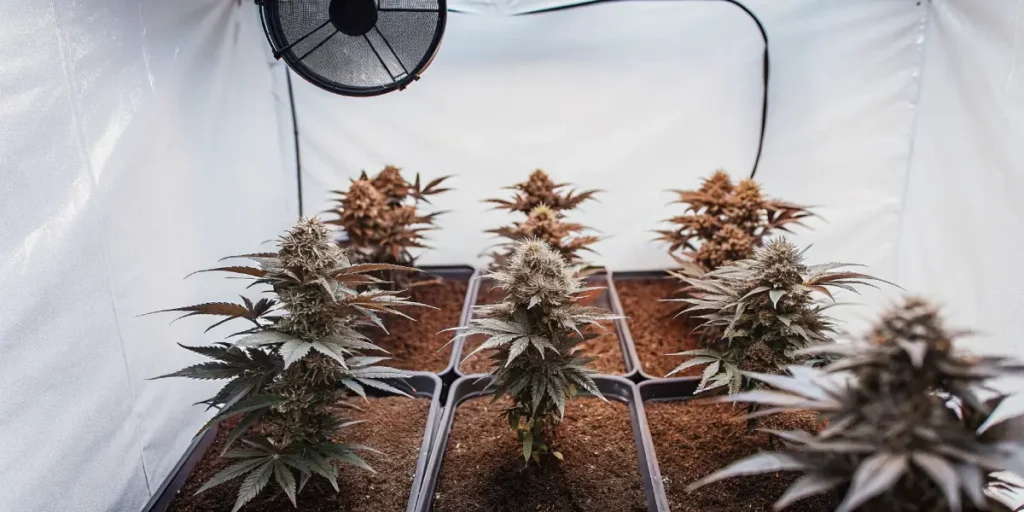
Harvesting & Drying kama kush cbd the Right Way
Harvesting kama kush cbd at the right time is crucial to maximize the potency and flavor of your crop. The ideal moment to harvest is when the majority of the trichomes have turned from clear to a milky white, with some beginning to take on an amber hue. This indicates that the plant has reached peak cannabinoid production. Additionally, keeping an eye on the pistils can also guide you; when about 70-80% of the pistils darken and curl inwards, your plant is ready for harvesting. Precise timing will ensure that you get the most out of your plant in terms of CBD content and overall quality.
When you decide to harvest, use sharp, sterilized shears to cut the branches of your kama kush cbd plants. It’s essential to handle the plants with care to preserve the trichomes, which hold the cannabinoids and terpenes, providing you with that aromatic and therapeutic profile. After cutting, remove the large fan leaves to reduce moisture and improve air circulation during drying. However, leaving the sugar leaves intact during the drying phase can protect the buds and maintain their resin levels.
Drying your kama kush cbd properly is the cornerstone of producing a smooth-smoke, high-potency product. Hang your branches upside down in a dark room with controlled conditions—optimal temperature should be around 60-70°F with humidity levels maintained at 50-60%. This slow-drying process, typically lasting 7-10 days, helps to prevent mold and preserve the critical terpenes and cannabinoids. Ensure proper air circulation to facilitate even drying but avoid direct fans hitting the flowers, as this could lead to uneven drying, affecting the quality.
Once the drying process is complete and the smaller branches snap rather than bend, your kama kush cbd is ready for the curing phase, which will further enhance the flavor and smokability of your product. Proper drying contributes significantly to the final characteristics of your cannabis, so investing time and care in this process is essential for achieving a premium quality product. Remember, patience and attention to the drying details can make a world of difference in the final outcome of your harvest.
Kama kush cbd Strain Type: Indica, Sativa or Hybrid?
Kama Kush CBD is a remarkable cannabis strain that is classified as an Indica-dominant hybrid. This strain is specifically bred to combine the relaxing effects of Indica strains with the therapeutic benefits of high-CBD content, making it a perfect choice for both recreational and medicinal users seeking relief without overwhelming psychoactive effects. The genetic makeup of Kama Kush CBD leans heavily towards Indica, providing users with a soothing and calming experience that is ideal for unwinding after a long day.
Though predominantly Indica, Kama Kush CBD possesses a fascinating balance due to its hybrid nature, which offers some subtle, uplifting Sativa qualities. This hybridization ensures that users can enjoy the tranquil, body-centered relaxation typical of Indicas while still maintaining a clear, focused mind, often associated with Sativa strains. The Sativa influence in this hybrid is purposeful; it counters the sedative effects, ensuring the user feels relaxed yet functional, without succumbing to overwhelming lethargy.
The cultivation of Kama Kush CBD benefits growers by providing a strain that encompasses the best features of both Indica and Sativa cannabis plants. The plant structure is predominantly Indica, exhibiting a shorter and bushier appearance, which is advantageous for indoor growing setups and space-limited environments. Its hybrid nature also imparts resilience against various growing challenges, including pests and fluctuations in weather. This makes Kama Kush CBD an ideal choice for growers of all experience levels, offering the rewards of a high-CBD strain with the ease of cultivation typical of Indica plants.
Among cannabis enthusiasts seeking physiological relief without intense cerebral intoxication, the Indica-dominant hybrid Kama Kush CBD stands out. Its balanced genetics provide a holistic experience characterized by relaxation and subtle mental clarity. This makes it a popular choice among users seeking to enjoy the benefits of cannabis while maintaining their daily routines, as well as patients who prioritize the anti-inflammatory and anti-anxiety properties of CBD. The strain represents an optimal fusion of Indica’s soothing properties and Sativa’s invigorating effects, crafted for a versatile and enjoyable consumption experience.
Why Grow Kama Kush CBD? Key Benefits for Cultivators
Kama Kush CBD is a popular choice among cultivators for several compelling reasons, starting with its unique cannabinoid profile. With high levels of CBD and minimal THC content, this strain appeals not only to recreational users but also to those seeking therapeutic benefits without the psychoactive effects typically associated with cannabis. This makes Kama Kush CBD an excellent choice for catering to a broader market, including those who are new to cannabis or looking for relief from various ailments, making it a versatile addition to any grower’s portfolio.
In addition to its appealing cannabinoid profile, Kama Kush CBD is known for its robust growth characteristics, which make it highly suitable for both novice and experienced cultivators. The strain is generally resilient against common pests and diseases, making it easier to manage and reducing the need for extensive chemical interventions. Furthermore, it usually maintains a manageable height and develops into a bushy plant, which is ideal for indoor growing environments. With proper care, this strain promises generous yields, ensuring that the efforts invested in the growing process result in substantial returns.
Another significant advantage of cultivating Kama Kush CBD is its aromatic and flavorful profile. The strain typically produces a sweet, fruity aroma with earthy undertones, making it an attractive option for consumers who appreciate a rich sensory experience. This pleasant aromatic profile not only adds value from a consumer perspective but also enhances the overall growing experience for cultivators. The vibrancy in both scent and flavor is complemented by the strain’s calming effects, which make it a favored option for those looking to unwind or manage stress. Cultivators can benefit from the high demand in markets where relaxation and therapeutic properties are prioritized.
Potential Challenges When Growing Kama Kush CBD
Growing Kama Kush CBD, a strain highly regarded for its therapeutic benefits and low THC content, can present several challenges, particularly for novice growers. One of the primary challenges is ensuring proper humidity levels. Kama Kush CBD thrives in a controlled environment where both temperature and humidity are monitored closely. Fluctuating humidity can lead to mold growth and other fungal diseases, which can severely impact plant health and cannabinoid content. It is crucial to maintain the optimal humidity level of around 40-60% during the vegetative stage and reduce it to around 30-40% during flowering to minimize risks.
Another potential challenge is pest control. Kama Kush CBD plants can be susceptible to various pests such as spider mites, aphids, and whiteflies, which can damage leaves and stunt growth. Implementing an integrated pest management program is essential to keep these pests at bay. This involves regular inspection of plants, introducing natural predators like ladybugs, and using organic insecticides as a last resort. Preventative measures, such as clean growing conditions and adequate air circulation, can significantly reduce the likelihood of pest infestations, ensuring healthier plant development.
Nutrient management also poses a challenge for growers of Kama Kush CBD. This strain requires a balanced nutrient regimen to achieve optimal growth. Overfeeding can lead to nutrient burn, while underfeeding can result in deficiencies, both of which can impede plant development and reduce yields. Regularly monitor the plants for signs of nutrient stress, and adjust the feeding schedule accordingly. It’s vital to research the specific nutrient requirements of Kama Kush CBD to tailor a feeding regime that promotes robust growth and maximizes CBD content.
Environmental factors such as light and space can also present challenges. Kama Kush CBD plants require adequate lighting to perform photosynthesis efficiently. Insufficient light can lead to weak, elongated stems and reduced yields. Ensuring that plants have enough space is equally important to prevent overcrowding, which can restrict airflow and promote conditions conducive to disease. Provide sufficient space between plants and use reflective surfaces to ensure even light distribution, encouraging strong growth and potent resin production.
Overall, while growing Kama Kush CBD can be rewarding, it requires careful attention to environmental conditions, pest control, nutrient management, and spatial arrangement. By anticipating these challenges and implementing proactive measures, growers can cultivate healthy plants that deliver the therapeutic benefits Kama Kush CBD is known for, ensuring both quality and sustainability in their cultivation efforts.
Is Kama Kush CBD Worth Buying? Here’s What You Need to Know
Kama Kush CBD is a variety of cannabis revered for its unique balance between therapeutic effects and cultivation manageability. Known for its significant CBD content and low THC levels, it has become a popular choice among medicinal users seeking relief from conditions such as anxiety, chronic pain, and inflammation without the psychoactive effects commonly associated with high THC strains. Kama Kush CBD provides a calming and relaxing experience, making it an attractive option for both novice and seasoned cannabis consumers looking for a gentle yet effective therapeutic alternative.
One of the key factors that make Kama Kush CBD worth considering is its robust growth characteristics. This strain is particularly favored by growers for its resilience against common pests and diseases, making it an ideal choice for both indoor and outdoor cultivation. Its relatively short flowering time, typically around 8-9 weeks, coupled with its ability to produce a generous yield, makes it a practical and rewarding choice for home cultivators. The plant’s adaptability to various climates adds to its appeal, allowing growers in diverse geographical locations to enjoy its benefits.
Another compelling reason to consider Kama Kush CBD is its distinct aromatic profile. The strain exudes a sweet and earthy aroma with subtle hints of pine and a touch of citrus. This unique scent not only enhances the sensory experience for users but also provides additional allure for cultivators looking to grow plants with a pleasing fragrance. The balanced and nuanced flavor profile is often a welcomed feature, especially for those who prioritize taste and aroma in their cannabis selection.
Overall, Kama Kush CBD stands out as a worthwhile investment for both therapeutic users and cultivators. Its combination of high CBD content, ease of growth, resistance to pests, and pleasant aromatic properties make it an excellent option for anyone looking to explore the benefits of CBD-rich cannabis. Whether you are new to cannabis or an experienced grower, Kama Kush CBD offers a versatile and rewarding experience that is likely to meet your needs and exceed your expectations.
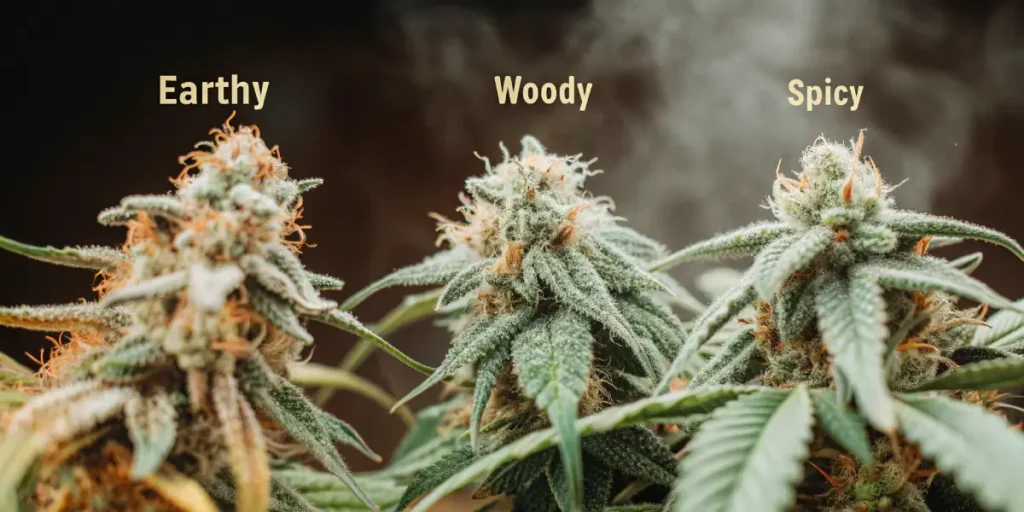
FAQs about Kama Kush CBD
What is Kama Kush CBD?
Kama Kush CBD is a strain of cannabis known for its high CBD content and therapeutic properties. It is often sought after by individuals looking for the health benefits of cannabis without the psychoactive effects associated with high THC strains. This strain offers a calming effect, making it a popular choice for managing stress, anxiety, and chronic pain.
How does Kama Kush CBD differ from other CBD products?
Kama Kush CBD differs from other CBD products primarily due to its genetics and the specific terpene profile it offers. While many CBD products are derived from industrial hemp, Kama Kush is developed from a high-CBD cannabis strain. Its unique blend of cannabinoids and terpenes provides a distinct experience, offering potential therapeutic benefits not found in other CBD products.
What potential benefits does Kama Kush CBD offer?
Kama Kush CBD is acclaimed for its array of potential benefits, including anxiety relief, pain management, and anti-inflammatory effects. Many users report an overall sense of calm and wellbeing while using this strain. Although clinical research is ongoing, numerous anecdotal reports suggest that Kama Kush CBD may also aid in alleviating symptoms related to insomnia, depression, and PTSD.
Are there any side effects associated with Kama Kush CBD?
While Kama Kush CBD is generally considered safe and well-tolerated by most users, some individuals may experience side effects such as dry mouth, dizziness, or fatigue. It’s important to start with a low dose and gradually increase it to find the optimal amount that works for you. Consulting with a healthcare provider before beginning any new supplement regimen is always advised.
How is Kama Kush CBD typically used?
Kama Kush CBD can be used in several forms, including oils, tinctures, capsules, and edibles, depending on individual preferences and needs. It’s also often enjoyed as a flower, which can be vaporized or smoked. The versatility of this strain allows users to choose their preferred method of consumption based on lifestyle and desired effects. Always ensure you acquire it from reputable sources to ensure quality and safety.

